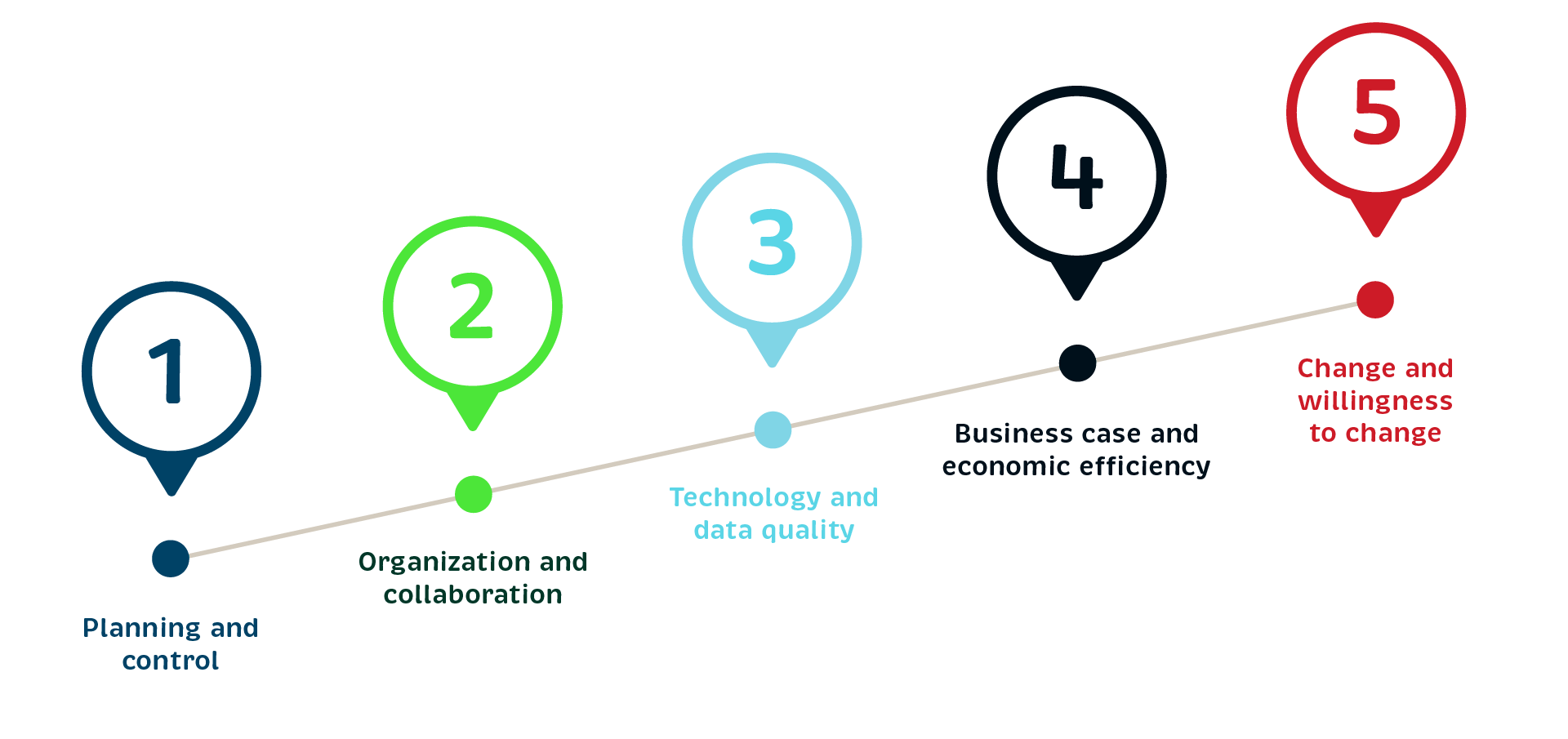The introduction of a new ERP system with S/4HANA is not an ordinary IT project. It is technologically demanding, strategically significant, and organizationally challenging. Companies face the task of fundamentally overhauling their existing system landscape, consistently migrating large volumes of data, and evaluating custom developments for future viability. At the same time, they must question existing processes, redesign them, and prepare employees for changed workflows.
For CIOs, the S/4HANA migration becomes a true test of capability. It requires technical expertise, entrepreneurial thinking, and clear leadership. Those who master it successfully create a stable foundation for a digital future and give their company a tangible competitive edge.
SAP projects offer the opportunity to modernize core processes, make data-driven decisions, and drive innovation. But technological progress alone is not enough. What matters is whether strategy, systems, and people within the company are aligned toward a common goal and support the transformation.
An ERP transformation reaches deep into the organization. It not only changes structures and processes but also mindsets and responsibilities. To fully realize its potential, technological modernization must be combined with cultural change. This creates the foundation for long-term innovation and future resilience.
Drivers of SAP Implementation: Between Pressure and Opportunity
Companies are under increasing pressure to streamline their processes, respond more quickly to change, and make well-informed decisions based on reliable data. SAP S/4HANA provides two key levers to achieve this: modern end-to-end processes along the value chain and a flexible platform that combines scalability, integration, and security.
In practice, we observe two main drivers behind SAP ERP migration projects: First, the announced end of support for all dedicated systems by 2027 is forcing many companies to take action. The switch to S/4HANA is necessary to ensure operational stability and continued development. Second, the move to S/4HANA automatically brings a technological leap — unlike previous versions, S/4HANA is cloud-based. SAP is pushing this approach to elevate integration, scalability, and security architecture to a new level.
Typical Pitfalls in SAP S/4HANA Migration Projects and How to Avoid Them
The migration to SAP S/4HANA is not merely an IT initiative. It affects processes, structures, and people across nearly all areas of a company — and that’s exactly where the challenge lies. In practice, similar pitfalls tend to emerge repeatedly. These can be avoided with early and structured countermeasures. From numerous projects, key success factors have crystallized. When viewed alongside the typical stumbling blocks, a clear picture emerges: those who understand the challenges can take targeted action.

Pitfall 1: Planning and control
Unrealistic timelines, ambitious budget targets, and a lack of clear objectives are among the most common causes of delays or rework. Technical and organizational efforts are often underestimated. Key stakeholders are involved too late, and milestones are not sufficiently secured.
In practice, full migration projects to S/4HANA often span several years. Those who allocate only a few months significantly underestimate the effort and put the project team under pressure early on.
What helps here: a dedicated project team backed by top management, a clear objective, detailed project preparation, and ongoing risk management. Projects that are realistically planned from the start and regularly reviewed create reliability and are more adaptable to change.
Pitfall 2: Organization and collaboration
Organizational complexity, unclear responsibilities, overload from day-to-day operations, and a lack of coordination between departments slow down many SAP projects. Individual processes that deviate significantly from the SAP standard can also create additional uncertainty.
Success arises when a committed and competent project team actively collaborates. Open communication, clear role distribution, and external support when needed help reduce friction and shape change together. This is not an area to cut corners—selecting individuals with a passion for these tasks and empowering them significantly reduces project risk.
Pitfall 3: Technology and data quality
From a technical perspective, migrating to SAP S/4HANA is a major challenge. Historically grown system landscapes, cross-module dependencies, and numerous third-party interfaces meet poor data quality, unclear migration paths, and inadequate preparation.
Leveraging best practices and learning from comparable projects has proven effective. A thorough early analysis of the initial situation, careful technology selection, a clean migration strategy, and continuous adjustment of the technical approach significantly enhance project security.
It pays off to dedicate sufficient time and attention to technical preparation and the data foundation. Early analysis, thoughtful technology choices, and a well-defined migration strategy—combined with ongoing alignment—greatly strengthen the project's resilience.
Pitfall 4: Business case and cost-effectiveness
Without a clear business case, an SAP S/4HANA migration lacks the necessary foundation for decision-making. If benefits, efforts, and risks are not transparently assessed, priorities remain unclear for decision-makers, and budgets are often allocated inappropriately or too conservatively.
Business and IT departments should therefore jointly define the financial framework early on—from process and data migration costs to infrastructure and business continuity. Only when the economic parameters are clearly documented can the project be managed in a well-founded way and effectively communicated to top management.
Pitfall 5: Change and willingness to change
Change is rarely comfortable. Many employees struggle to let go of familiar processes. Communication often remains sporadic, and project goals may shift over time without corresponding adjustments to the strategy.
Successfully managed change happens when people are actively involved. Key success factors include regular communication, strong change management, and the willingness to make strategic adjustments when goals or conditions evolve.
Conclusion: Success Factors Instead of Pitfalls
The most common pitfalls in migrating to SAP S/4HANA are well known — yet they continue to appear time and again. Those who understand the root causes and focus on the key success factors significantly increase their chances of success. Clear structures, continuous governance, and a strong connection between technology, organization, and culture are essential.
In Part 2, Implementation with Structure: How to Successfully Migrate to S/4HANA, we show how these success factors can be anchored in practice — using suitable methods, frameworks, and an approach that meaningfully combines technical execution with management perspective.



